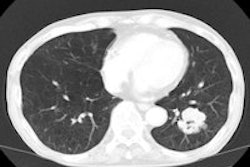
A software application can be used to extract patient radiation dose information directly from imaging modalities and store the data in a RIS, aiding in analyses and potentially contributing to individualized patient care, researchers have found.
In a study published online on June 26 in the Journal of Digital Imaging, a team led by Dr. Andrea Nitrosi, from the medical physics unit of Arcispedale Santa Maria Nuova Hospital IRCCS in Reggio Emilia, Italy, shared how its internally developed Gray Detector software offers dose management and optimization capabilities.
"Dosimetric information, together with RIS information such as patient data, technician, radiologist, and, most importantly, diagnostic task/diagnosis and report outcome, could 'contextualize' the dose and consequently help in optimizing the image-quality/dose ratio upon which it is possible to make a clinical decision," the authors wrote. "In addition, dosimetric value information will be stored in the patient's medical record, allowing further real 'patient-centered' dosimetric value optimization and procedure selection such as 'low-dose pathways' for patients undergoing many ionizing procedures."
Furthermore, the ability to extract and store dosimetric values within the RIS could be the first step toward estimating effective dose for individual patients, according to the group.
"This estimation could be done by considering the patient's personal and morphological characteristics, as well as the pathology progress, and adapting this information on known anthropomorphic phantoms," they wrote.
While the RIS contains patients' personal data and exams that have been performed, it usually doesn't store the dose information for exams, which is sent by imaging modalities via DICOM modality performed procedure step (MPPS) or stored in the image header in the PACS, the researchers noted.
"By saving the information from modalities (MPPS or Digital Imaging and Communications in Medicine [DICOM] header) in RIS, we can correctly relate it to the patient, to the request/episode, and to his/her clinical data," they wrote. "This association will let us create a database containing the dosimetric history of patients and obtain that information to improve procedures and evaluate the compliance with the Italian diagnostic reference levels (DRLs). Linking dosimetric value to RIS will also solve problems common in CT such as the association of the dosimetric value related to multiple studies to the same protocol, when the name of this single protocol is used to describe the whole study."
An add-on RIS module
To achieve those goals, the Italian team created Gray Detector, a Web-based application developed using Pentaho suite open-source business intelligence software. Gray Detector, an add-on RIS module, collects radiation dose information directly from modalities such as CT, angiography/vascular, mammography, and radiography systems. The researchers developed three automatic extraction methods: MPPS message analysis, query/retrieve of the PACS, and a mix of the two methods.
"The adoption of three different methods to extract dosimetric information from modalities/images makes our system highly flexible and makes it possible to integrate any kind of modality, in a vendor/version-neutral way," they wrote. "This feature could be adopted for any hospital environment."
Dose information is added as an attribute of the single patient study on the RIS, they stated. Users can select from a group of tabs on the software's user interface to view and filter different forms and associations for the data, according to the researchers.
"It is possible to consult all the data available for a patient or extract and build reports/graphs of the dosimetric information by modality, room, exam type, data range, operator, and so on," they wrote.
The researchers said they are currently developing the ability to compare dosimetric data for different rooms or diagnostic equipment, as well as activation of alerts if a patient's dosimetric value limit has been exceeded.
"When considering limits based on the effective dose, it should be necessary to estimate it by matching dosimetric information (DLP, AGD, etc.) with patient characteristics," such as body mass index (BMI), age, etc., they wrote. "It is worthy of note that integrating this dosimetric information on the RIS system will potentially enable even real-time alerts while planning or performing an exam."



















